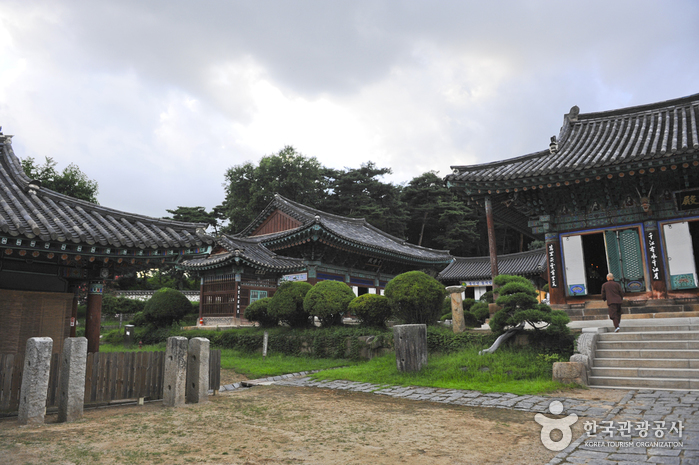Discover the Historic Beauty of Yongjusa Temple
Welcome to Yongjusa Temple, a hidden gem nestled near the Yungneung and Geolleung Royal Tombs. This historic site holds a rich history and offers a serene escape from the bustling city life. Let’s delve into the fascinating story behind this temple and explore the cultural treasures it holds.
A Temple with a Resilient Past
Originally known as Garyangsa Temple, Yongjusa Temple was first constructed in 854 during the 16th year of King Munseong’s reign in the Silla Kingdom. It gained fame for its picturesque surroundings of majestic mountains and crystal-clear waters. Sadly, the temple met its unfortunate fate during the Manchu War of 1636 when it was destroyed by fire.
A King’s Tribute to His Father
During the Joseon dynasty, King Jeongjo, known for his admiration for his father, decided to move his father’s tomb to this very site. To honor his father’s memory, he built Yongjusa Temple and dedicated it to praying for his father’s eternal rest. Legend has it that one night, King Jeongjo dreamt of a dragon ascending to the sky, holding a magic ball in its mouth. Inspired by this dream, he named the temple “Yongjusa,” which translates to “the temple of a dragon with a magic ball” in Korean.
An Architectural Marvel and National Treasures
As you explore the temple’s courtyard, you’ll come across incredible architectural wonders and cultural treasures. The Bronze Bell of Yongjusa Temple, a designated National Treasure, stands proudly, resonating with the echoes of centuries past. The impressive stone pagoda showcases the exquisite craftsmanship of the era.
The Daeungbojeon, the main hall of Yongjusa Temple, invites visitors with its tranquil ambiance. Step inside and feel the spiritual energy that has reverberated through these walls for generations. Nearby, the Cheonboru Pavilion offers a peaceful spot to contemplate and immerse yourself in the beauty of nature.
A Glimpse into King Jeongjo’s Wisdom
A visit to Yongjusa Temple is incomplete without discovering the “Bumoeunjunggyeong” books. These literary works were written by King Jeongjo himself, focusing on the importance of filial affection and respect for one’s parents. They provide a unique insight into the wisdom and values of this revered king, adding another layer of significance to your visit.
A Cultural Heritage to Cherish
Today, both Yongjusa Temple and the Yungneung and Geolleung Royal Tombs are highly regarded for their cultural heritage. They offer a glimpse into the rich history and traditions of South Korea. As you explore the temple grounds and its surroundings, you will be transported to a bygone era, where nature and spirituality intertwine.
Come and experience the serene beauty and deep-rooted history of Yongjusa Temple. Let its stories and treasures inspire and captivate you, leaving an indelible mark on your journey through South Korea.

